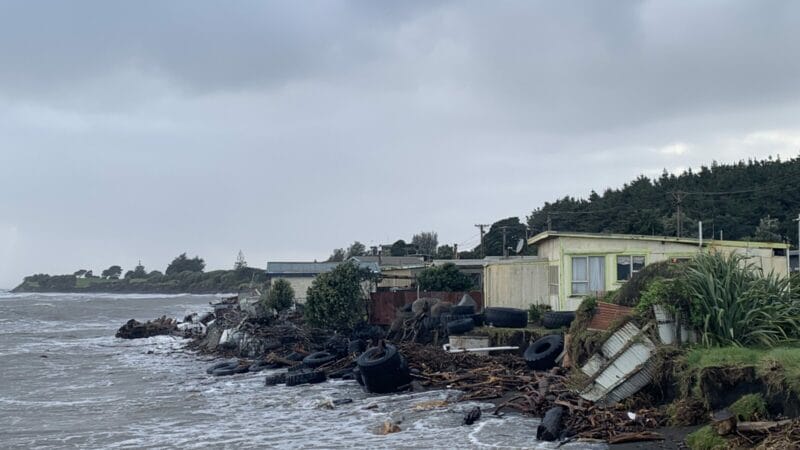Fishing resources: Resource Management Act 1991 vs. the Fisheries Act 1996
A persistent, if not overly acknowledged, trait of fisheries management in New Zealand is its centralisation. Compared with many other decisions over natural resources, such as planning documents prepared under the Resource Management Act 1991 (RMA), there is less opportunity for local control. Total allowable commercial catch is set by central government under the Fisheries Act 1996 (FA). Even where a fisheries resource may be right on one’s doorstep, decisions about how it is managed are made in Wellington by an opaque layer of government, industry and stakeholders.
But what if fisheries resources could be managed, for RMA purposes of course, through regional plans? If that were the case, local communities would have an opportunity to make submissions on how the fisheries in their community are being managed at least once every ten years. The degree of local control over fisheries would be unprecedented in the post-European history of New Zealand. That’s exactly what is starting to happen, thanks to a recent Court of Appeal decision that has debunked the widely held assumption that the RMA cannot be used to manage fisheries.
The Court of Appeal in Attorney-General v Trustees of Motiti Rohe Moana Trust [2019] NZCA 532 delineates the extent to which regional councils can utilise the RMA to protect fisheries, while peacefully coexisting with the role of the FA. Its effects are already being felt in Northland, where the Proposed Regional Plan now includes restrictions on fishing. Is this the beginning of greater local control over New Zealand’s fishing resources?
Key to the Court of Appeal’s decision is subsections 30(1)(d)(i), (ii)) and (vii) of the RMA, which provide that every regional council has the following functions in respect of any coastal marine area in their region:
- the control of land and associated natural and physical natural resources;
- the occupation of space in, and the extraction of sand, shingle shell or other natural material from the CMA, to the extent that it is within the common marina and coastal area; and
- activities in relation to the surface of water.
However, s 30(2) of the RMA provides that a regional council and the Minister of Conservation must not perform these functions to control the “taking, allocation and enhancement of fisheries resources for the purpose of managing fishing or fisheries resources controlled under the Fisheries Act 1996”. This proviso has often been taken to prevent regional councils from including rules relating to fishing in regional plans. This is despite the oft-overlooked provision in s 30(1)(ga), which provides that regional councils have the function of the establishment, implementation and review of objectives, policies and methods for maintaining indigenous biodiversity. The Court of Appeal resolved this apparent conflict.
In the Court of Appeal decision, the Bay of Plenty Regional Council (BOPRC) had agreed to prohibit fishing in three Outstanding Natural Character Areas (ONC) in its Proposed Regional Coastal Environmental Plan because the three ONC’s had lost their kelp forests due to kina barrens caused by the overfishing of snapper and crayfish.
Snapper and crayfish are the natural predators of kina, which is itself a predator of kelp. The overfishing of snapper (particularly mature specimens) and crayfish results in a trophic cascade, whereby kina populations explode and decimate kelp, resulting in kelp barrens of low productivity reef devoid of any aquatic vegetation to provide shelter or food to marine organisms. The so-called ‘kina barrens’ have rapidly expanded around New Zealand’s coast in recent years, including much of the Coromandel, Hauraki Gulf and Northland’s East Coast, causing serious concern amongst fishermen and divers.
The BOPRC, supported by the Attorney-General, claimed its jurisdiction over fish resources controlled by the FA was defined by purpose not subject matter and it was entitled to intervene in fisheries management for non-FA purposes. However, the NZ Rock Lobster Industry Council and other respondents argued that BOPRC had no authority to maintain indigenous biodiversity.
The Court of Appeal noted that s 30(1)(d) expressly limited the power conferred on regional councils stating, under s 30(2), that BOPRC “must not perform” the three s 30(1)(d) functions “to control the taking … of fisheries resources for the purpose of managing fishing or fisheries resources controlled under the FA”. However, s 30(1)(ga) separately assigned to regional councils the function of maintaining indigenous biological diversity in their regions, which extended to the CMA. Importantly, this subsection is not subject to s 30(2).
The Court noted that the FA and RMA conferred different objectives; the RMA’s objective of protecting indigenous biodiversity was much broader than the FA’s purpose of sustainably utilising fisheries resources. The maintenance of indigenous biodiversity was deliberately assigned to regional councils under the RMA, to give effect to New Zealand’s international obligations and to reflect the objectives and policies of the New Zealand Costal Policy Statement. The FA and the RMA are complementary regimes.
Attorney-General v Trustees of Motiti Rohe Moana Trust’s potential for far reaching consequences is already becoming apparent. The Environment Court relied upon the Court of Appeal’s decision in Bay of Islands Maritime Park Inc v Northland Regional Council [2022] NZEnvC 228 to impose fishing controls in the Bay of Islands through the Proposed Northland Regional Plan. Whilst it is too early to call whether further regions will follow suit, at least there is now a clear pathway for greater local control of fisheries.



